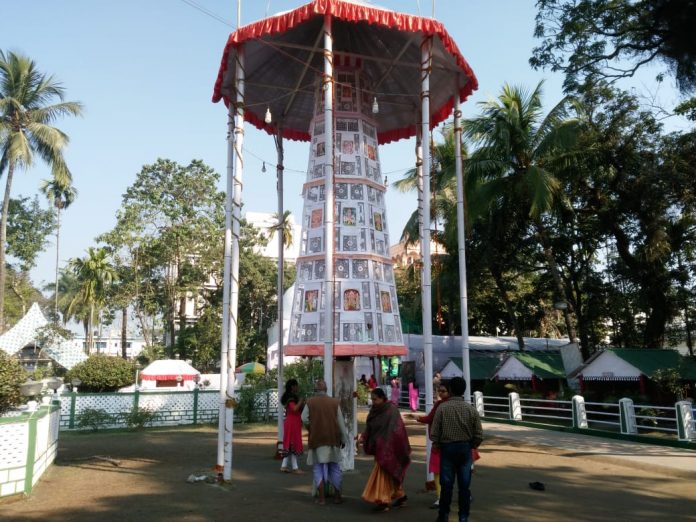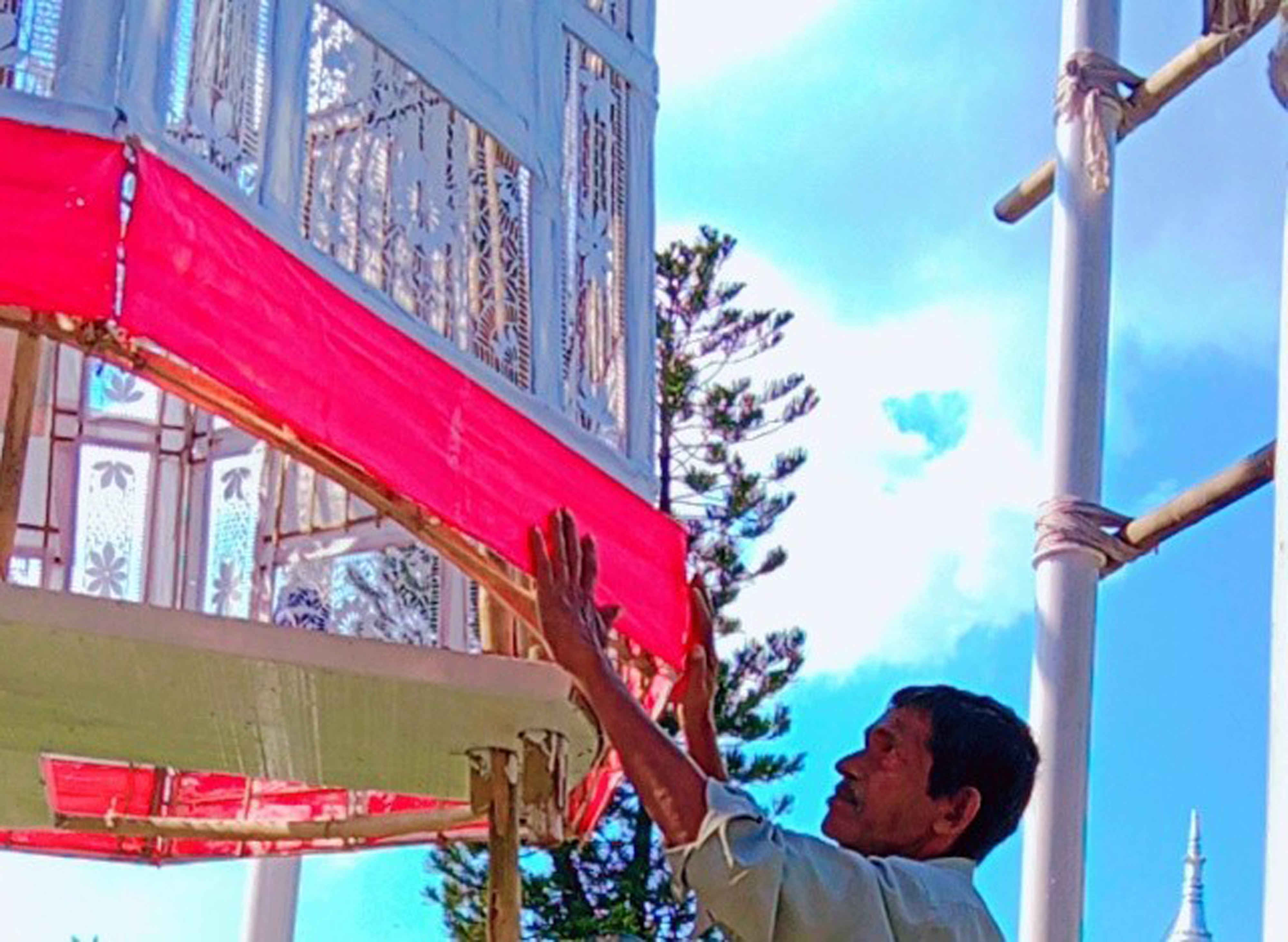
As per local history, more than 200 years ago the Maharaja of the Koch Dynasty pressed a Muslim family into service to make the Rashchakhra (holy wheel), who continue to build the structure to this day.
Partho Burman | TwoCircles.net
KOLKATA — For many in West Bengal, the ‘Rash Festival’ serves as a unique example of brotherhood irrespective of religious diversity. Rash Festival is an 18-day affair held in honour of Lord Krishna (or Madanmohan) and is held near the Madanmohan Temple in the Cooch Behar district. For the past 100 years, a Muslim family from the Ghughumari region of the state has traditionally been making the Rashchakra (holy wheel) displayed at the festival.
Altaf Miya, 58, is currently responsible for making the Rashchakra. He learned the skill from his father Ajij Miya and grandfather Panmamud Miya. Altaf Miya has continued the practice since his father passed away when he was 16 years old.
The Rashchakra, a semicircular bamboo and paper structure, has religious significance. It was constructed during Rash Mela in honour of Lord Krishna and serves as a representation of interfaith harmony.

“Our family has done it traditionally. I am a third-generation artisan. The Rashchakra is finished in one month. On the day of Laxmi Puja, I started preparing for it. The Chakra is finished and placed at the fairground on Rash Purnima (the night of the full moon). It is a special representation of the confluence of Hinduism, Islam and Buddhism,” Altaf Miya told TwoCircles.net
As per local history, more than 200 years ago the Maharaja of the Koch Dynasty pressed this Muslim family into service to make the Rashchakhra. This year marked the 210th anniversary of the festival, which was first held in 1812. A massive fair is also held during the festival held at Parade Ground, also referred to as Rash Mela Ground. The event got underway officially on November 8 this year.
The event is celebrated mutually by Hindus, Muslims, Sikhs and Buddhists in Cooch Behar.
“Rashchakra measures 268 feet in width and 22 feet in height. 32 different images of Hindu deities are etched on it. It includes Kali, Krishna, Saraswati and Durga. In addition, the top of it features a Muslim ‘Taziya’ cut out of white paper. The Madanmohan Temple is all white, hence white paper is used. I get assistance from my family in finishing this lightweight structure. The event is also known as ‘Milan Mela’ (a fair of unity),” Altaf Miya said.
Rash Mela’s historical context
Maharaja Nara Narayan, the last ruler of the undivided Koch dynasty of the Kamata Kingdom, performed the first Madanmohan devotional service in 1533 in honour of Lord Krishna. However, the festival-cum-fair in Bhetaguri was started in 1812 by Maharaja Harendra Narayan. Later in 1890, Maharaja Nripendra Narayan of the princely state of Cooch Behar moved it to the Bairagi Dighi neighbourhood next to Madanmohan Temple.
According to Kumar Mridul Narayan, a 16th-generation descendent of the Koch Dynasty, “Rash is a rich cultural celebration of Cooch Behar.”
As per Narayan, the Maharaja believed that “all religions are the same.’
“Earlier, the Maharaja would rotate the Rashchakra to formally kick off the celebrations. At present, the District Magistrate of Cooch Behar, who is also the President of the Debottar Trust Board, currently fulfils these duties. He spins the Rashchakra, signalling the start of the Rash Mela,” Narayan said.
Popular festival in Bengal
According to Ranajit Deb, an author based in Cooch-Behar, Rash Mela is the most well-known event in Bengal. “It is a festival honouring Lord Krishna and his eternal love Sri Radhika,” he said.
Folk tales, dance and uplifting music are used to commemorate the celebration. Cooch Behar’s palace is exquisitely decorated.
“Thousands of people come to Cooch Behar to take part in the communal festivities and see the carnival, including worshippers, tourists and sellers from all over the state and neighbouring nations. The fair is the perfect venue for bringing together regional folk arts and crafts. People swarm the vendors selling these things. The demand for handicrafts made of bamboo, wood, stone and metal is tremendous,” Deb told TwoCircles.net.
Deb claims that several cultural events are planned during the lengthy fair. The official duration is 15 days. However, it is typically extended by a few extra days each year. “Earlier, a three-day event kicked off the fair. It then expanded to 5, 8, and 12 days, and is currently 18 days. Each year, six Kashmiri families come to this area to offer winter items. Additionally, vendors from Bangladesh, Bhutan, and Nepal set up their shops.
The place hosts a variety of appetizing food stalls, religious literature, nursery supplies, furniture, kitchenware, winter clothing, magic shows, a merry-go-round, free health examination booths, and a stage for cultural events and theatre performances. Every year, the fair generates sales of nearly Rs. 18 crores. “The Rash Mela has established a unique tradition. It has a particular identity for the Cooch Behar people because of its uniqueness and indigenous clarity,” Deb said.
Partho Burman is an award-winning independent journalist based in Kolkata. He writes inspirational, motivational and environmental stories. He tweets at @ParthoBurman

